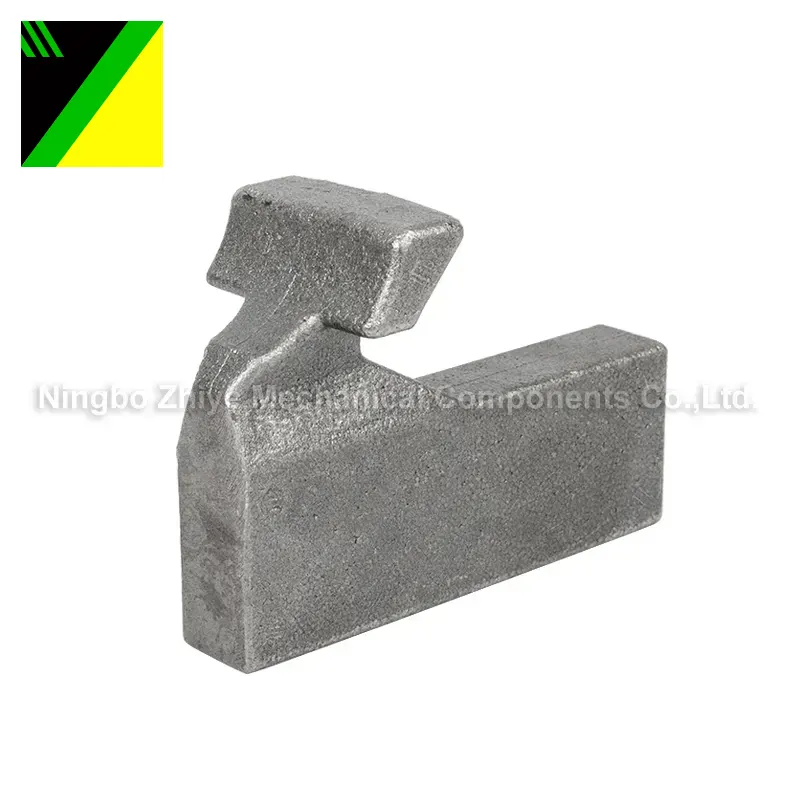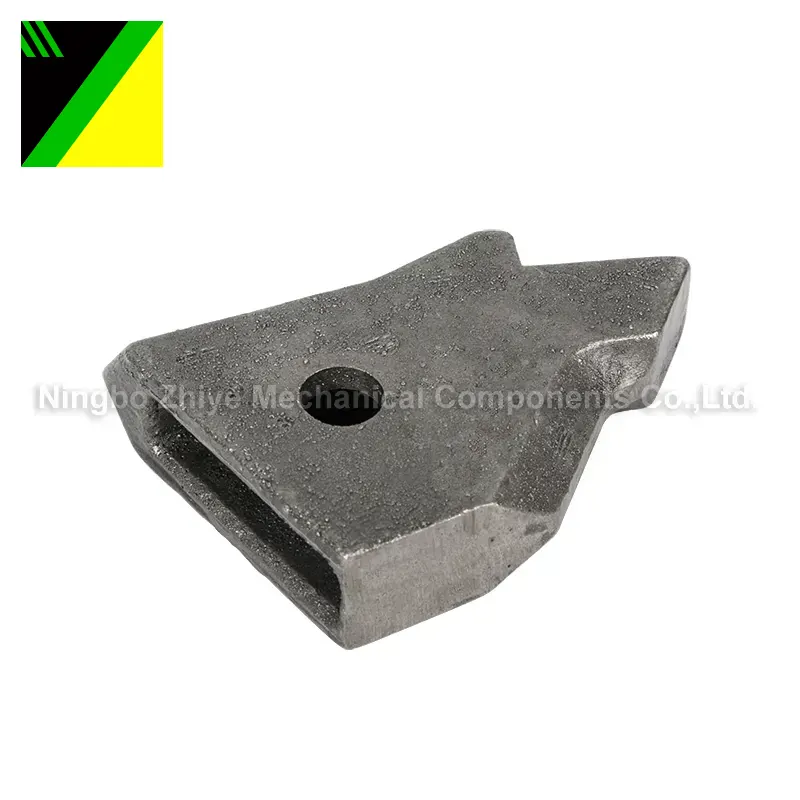
- English
- Español
- Português
- русский
- Français
- 日本語
- Deutsch
- tiếng Việt
- Italiano
- Nederlands
- ภาษาไทย
- Polski
- 한국어
- Svenska
- magyar
- Malay
- বাংলা ভাষার
- Dansk
- Suomi
- हिन्दी
- Pilipino
- Türkçe
- Gaeilge
- العربية
- Indonesia
- Norsk
- تمل
- český
- ελληνικά
- український
- Javanese
- فارسی
- தமிழ்
- తెలుగు
- नेपाली
- Burmese
- български
- ລາວ
- Latine
- Қазақша
- Euskal
- Azərbaycan
- Slovenský jazyk
- Македонски
- Lietuvos
- Eesti Keel
- Română
- Slovenski
- मराठी
- Srpski језик
China Carbon Steel Casting Factory
1.What is carbon steel casting?
Carbon cast steel refers to cast steel with carbon as the main alloying element and containing a small amount of other elements. According to the carbon content in the steel, it can be divided into low carbon steel (C: ≤0.25%), medium carbon steel (0.25%<C≤0.60%), and high carbon steel (C>0.60%). As a leading supplier to the carbon cast steel industry, ZHIYE value customer satisfaction and excellent customer service. Our ability to supply a wide range of cast steel products at competitive prices, short delivery times and experienced staff ensure quality.
2.What are the performance characteristics of carbon cast steel?
The cooling speed of carbon steel castings in the casting mold is generally slow, so the structure is characterized by coarse and uneven grains. Carbon steel castings are generally large in size and do not require forging, so the segregation of carbon steel castings is more obvious, and dendritic, columnar, reticular and Widmanstatten structures are more common. Carbon steel castings have large internal stress and poor mechanical properties, especially low cross-sectional shrinkage and impact toughness. However, because the forming method of carbon steel castings is simple and the processing is convenient, carbon steel castings are widely used.
Carbon steel castings are not suitable for direct use due to their low plasticity and toughness in the cast state. In order to improve the performance of carbon steel castings, heat treatment is often required to refine the grains, eliminate Widmanstatten structure and casting stress, and improve mechanical properties. Carbon steel castings with complex shapes that are prone to deformation and cracking need to be annealed; carbon steel castings with simple shapes and not too thick walls need to be normalized; carbon steel castings with larger sizes are generally tempered after normalizing; carbon steel castings with simple shapes but requiring higher mechanical properties need to be quenched and tempered. Annealing or normalizing is generally performed before quenching and tempering, and some are directly quenched and tempered in the cast state. The latter has a simple process, a short production cycle, and low cost.
| Model | Yield StrengthReH(Rp0.2)/MPa | Tensile StrengthRm/MPa | Elongation As/% | Select by contract | ||
| Sectional shrinkageZ/% | Impact absorptionAkv/J | Impact absorptionAku/J | ||||
| ZG 200-400 | 200 | 400 | 25 | 40 | 30 | 47 |
| ZG 230-450 | 230 | 450 | 22 | 32 | 25 | 35 |
| ZG 270-500 | 270 | 500 | 18 | 25 | 22 | 27 |
| ZG 310-570 | 310 | 570 | 15 | 21 | 15 | 24 |
| ZG 340-640 | 340 | 640 | 10 | 18 | 10 | 16 |
| Note 1: The performance of each grade listed in the table is suitable for castings with a thickness of less than 100mm. When the thickness of the casting exceeds 100mm, the ReH (Rp0.2) yield strength specified in the table is for design purposes only.Note 2: The notch of the test bar for the impact absorption energy Aku in the table is 2mm. | ||||||
Table: Mechanical properties (》=)
3.What is the composition of carbon steel casting?
According to China's national standard GB11352-2009, general engineering carbon steel castings are divided into 5 grades, as follows:
| Model | C | Si | Mn | S | P | Residual Elements | |||||
| Ni | Cr | Cu | Mo | V | Total residual elements | ||||||
| ZG 200-400 | 0.2 | 0.6 | 0.8 | 0.035 | 0.035 | 0.4 | 0.35 | 0.4 | 0.2 | 0.05 | 1.00 |
| ZG 230-450 | 0.3 | 0.9 | |||||||||
| ZG 270-500 | 0.4 | ||||||||||
| ZG 310-570 | 0.5 | ||||||||||
| ZG 340-640 | 0.5 | ||||||||||
| Note 1: For carbon with an upper limit of 0.01%, an increase of 0.04% of manganese is allowed. The maximum manganese content for ZG 200-400 is 1.00%, and the maximum manganese content for the other four grades is 1.2%. Note 2: Unless otherwise specified, residual elements are not used as acceptance criteria. | |||||||||||
4.What are the application areas of Carbon cast steel?
Carbon steel castings are widely used in many industrial fields, mainly including:
1) In mechanical manufacturing, they are used to manufacture parts of machine tools, steel machinery and other equipment, such as axles, gears, cylinder heads, bases, brackets, etc.
2) In automobile manufacturing, in the automobile manufacturing industry, carbon steel castings are used to manufacture key components such as engine cylinder heads, crankshafts, connecting rods, brakes and steering gears.
3) In the construction industry, in the construction industry, carbon steel castings can be used to manufacture beams, columns, embedded load-bearing parts, etc.
4) In the aerospace industry, in the aerospace field, carbon steel castings are used to manufacture high-precision and high-strength components such as aircraft engine supports and aircraft structural parts.
- View as
Carbon Steel Casting Wedge 120-150
Zhiye Casting is China's Carbon Steel Casting Wedge 120-150 manufacturer and supplier. With an experienced R&D team in this field, we can provide domestic and foreign customers with the most cost-effective products.
Read MoreSend InquiryCarbon Steel Casting Wedge 95
Zhiye Casting is China's Carbon Steel Casting Wedge 95 manufacturer and supplier. With an experienced R&D team in this field, we can provide domestic and foreign customers with the most cost-effective products.
Read MoreSend InquiryDouble-ear wedge-shaped wire clamp body
Zhiye Casting is China's Double-ear wedge-shaped wire clamp body manufacturer and supplier. With an experienced R&D team in this field, we can provide domestic and foreign customers with the most cost-effective products.
Read MoreSend InquiryCarbon Steel Casting Small Nut
High quality Carbon Steel Casting Small Nut made in China can be wholesaled from Zhiye Mechanical, as one of the manufacturers and suppliers in China. Buy latest selling Carbon Steel Casting Small Nut with low price from our factory. Our products in stock support brands, lower price than peers and can be customized, we are happy to provide you with a discount quotation.
Read MoreSend InquiryCarbon Steel Casting Large Nut
Carbon Steel Casting Large Nut is mainly used to make gears, ratchets, forks, etc.
Read MoreSend InquiryDouble-ear wedge-shaped wire clamp housing
Zhiye Casting is China's Double-ear wedge-shaped wire clamp housing manufacturer and supplier. With an experienced R&D team in this field, we can provide domestic and foreign customers with the most cost-effective products.
Read MoreSend Inquiry












